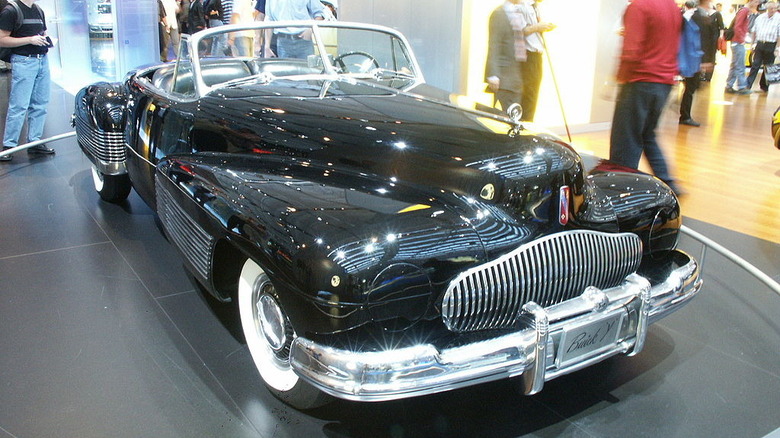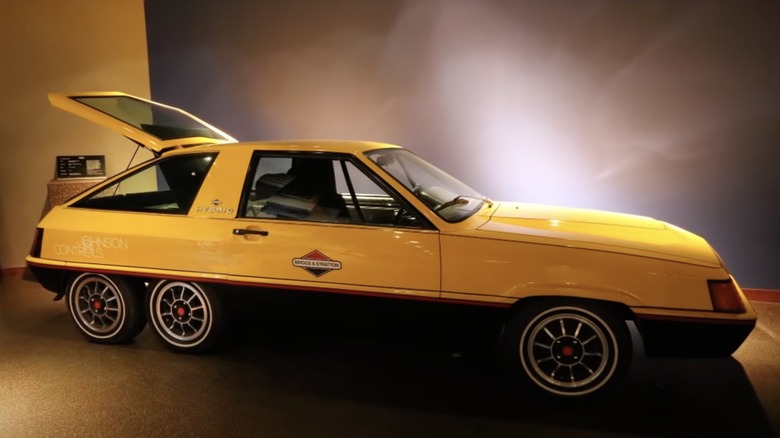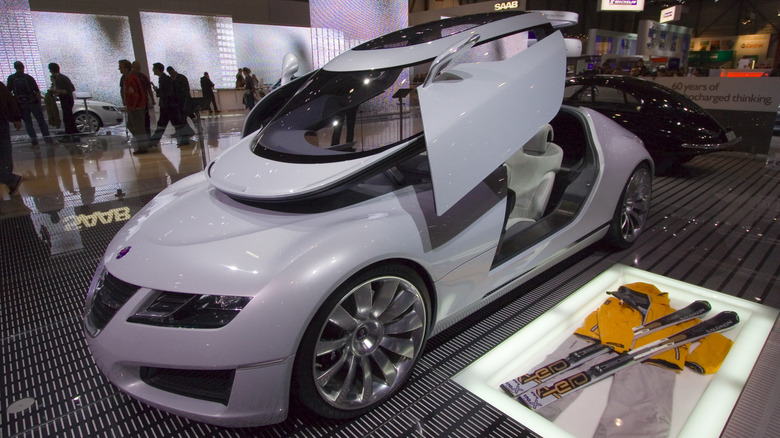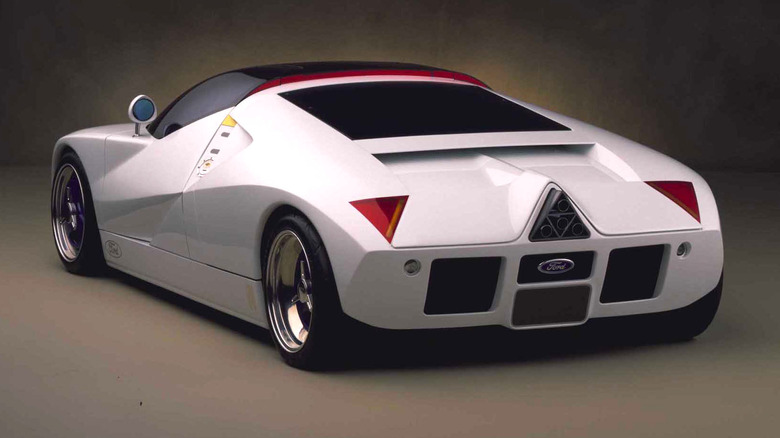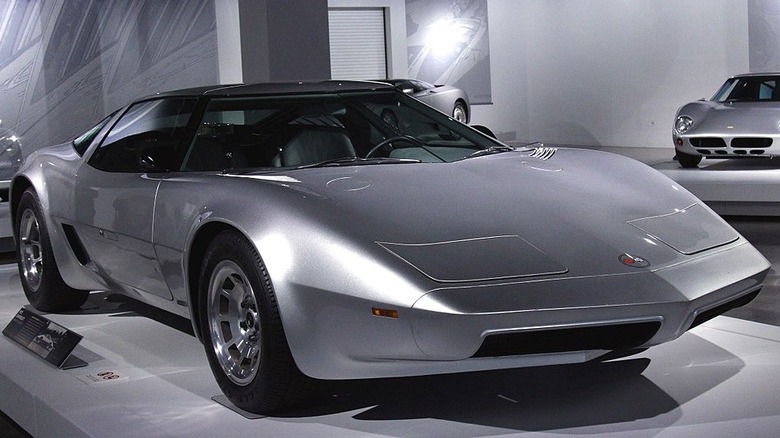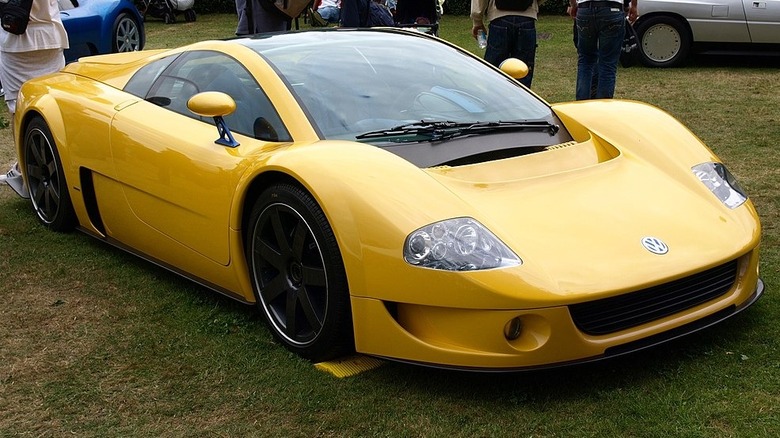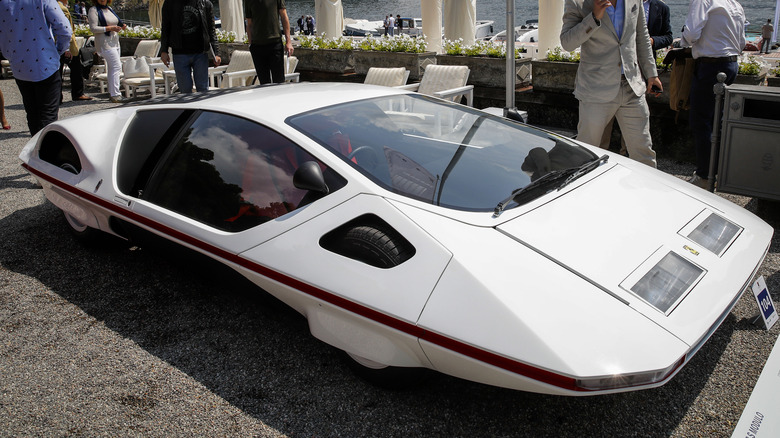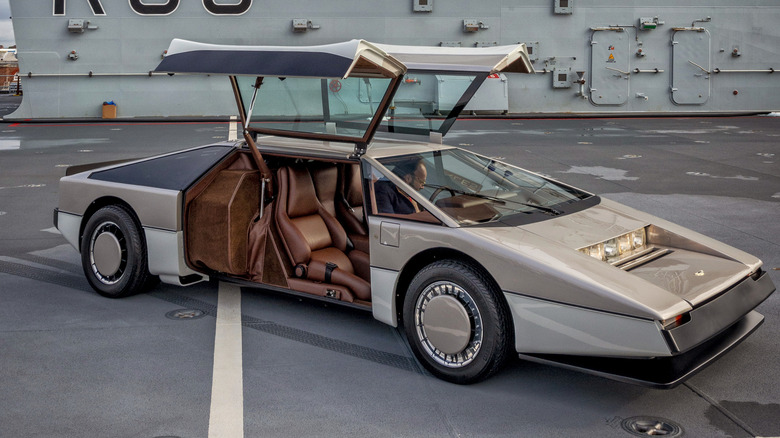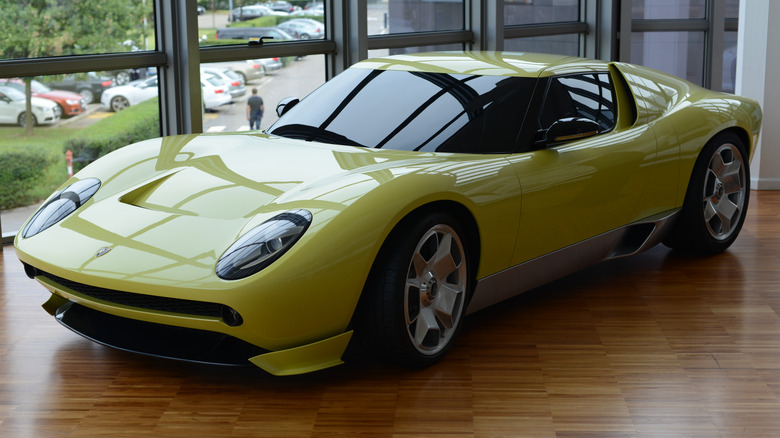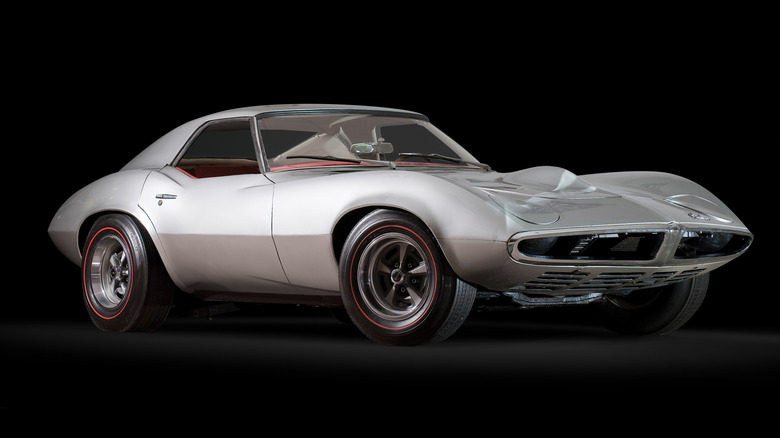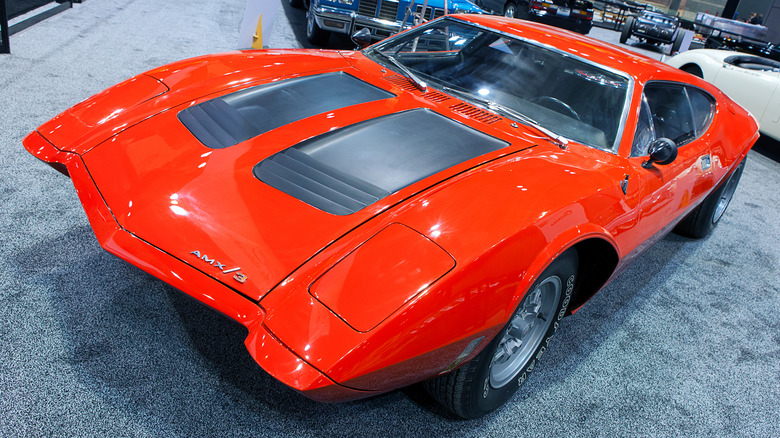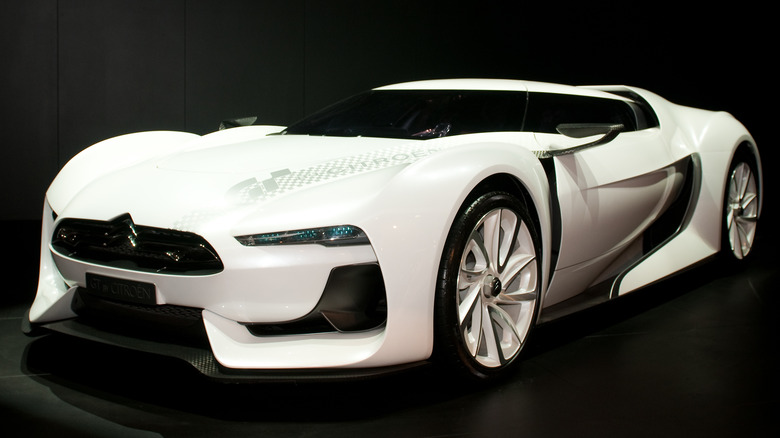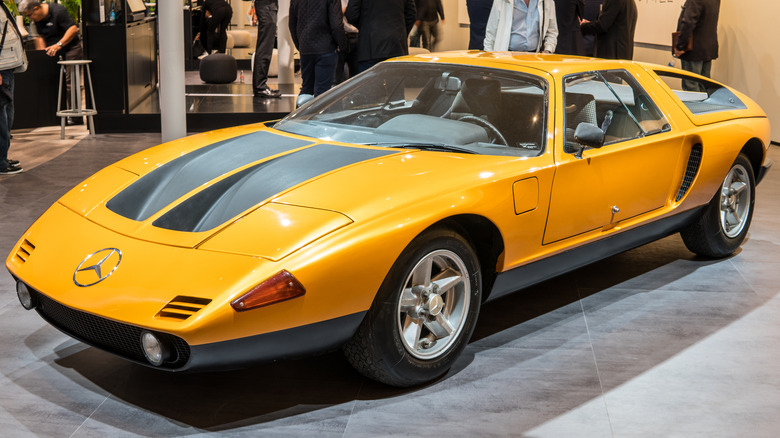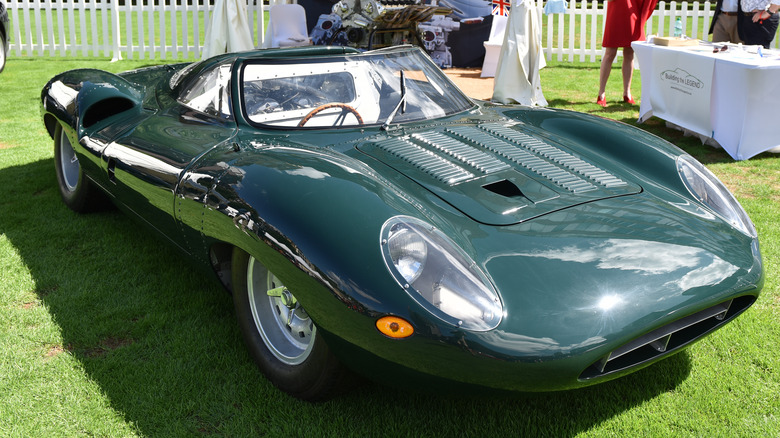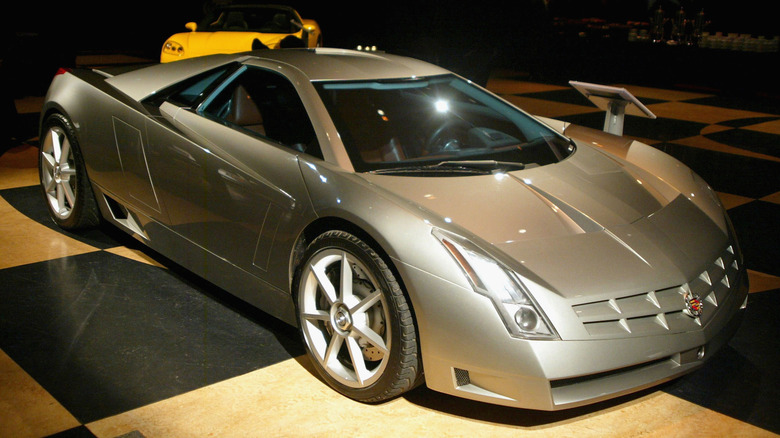The 15 Coolest Concept Cars Of All Time
For more than a century, automakers use and have used myriad ways to develop and build cars, the systems that run cars, and the processes for selling the cars. In the early days, trial and error ruled, and designers and engineers had to rely on intuition and gut feelings to figure out what would work and what people would buy. Some strange creations resulted from this process, but the highly successful machines we drive today were born from it.
Today, automakers have amazing amounts of computing power to layout every single inch and part of a car long before the manufacturing process even begins. We have efficiency and foresight like no other time before. Manufacturers eventually discovered the concept car as a way to reach the public and test new ideas. Since its inception, concept cars have wowed the public and offered a point of pride for manufacturers to show off their car-building skills. Fortunately, some have been pretty amazing cars with all the beauty, design, and technology possible distilled into hunks of fiberglass and steel. Here are fifteen of the coolest concepts of all time.
1938 Buick Y-Job
Concept cars are how companies show the public what they are thinking for future designs. They provide clues of upcoming developments and technologies and show them to the public before they are ready for mainstream production. But there was a time before the concept car existed, and Buick started the trend with their 1938 Y-Job.
Featuring several cutting-edge features and progressive styling, the Y-Job was an exercise in style by the legendary GM designer Harley Earl. It was based on the Buick Series 50 Super and featured concealed running boards, obscured headlights, recessed door handles, and an electrohydraulic power convertible top, among the many details that made it unique. Not only was it expressly designed to be an experimental model, but it was also used as Harley Earl's personal daily driver for many years.
Compared to today's cars, the Y-Job looks fairly conservative, but in the late 1930s, it was highly progressive as it incorporated contemporary features with novel ones. Furthermore, the popular response proved the concept car to be an effective tool for brand promotions. The coolest facet of the car is that the Y-Job set the stage for GM and others to dream big and present the wildest ideas of their time at various auto shows and public events.
1980 Briggs & Stratton Hybrid
In the long list of great companies to produce a concept vehicle, the one that builds the engine for your lawnmower is not likely to come first to mind. But Briggs & Stratton built one, and it's both very cool and a bit weird. The background of the concept comes on the heels of the Arab Oil Embargo and the subsequent shift to fuel-efficient cars in the U.S. While buyers flocked to small cars like Honda and Toyota, American manufacturers worked on delivering their own alternatives.
Briggs and Stratton, a name synonymous with cutting grass, undertook a project to deliver a fuel-efficient car using a small displacement engine pulled out of its current production facilities. The Briggs and Stratton Hybrid coupled a Vanguard V-twin air-cooled engine with a displacement of 694cc to an electric motor and manual transmission. The electric motor is powered by six-volt lead-acid batteries mounted behind the rear axle. The most unique feature of this car is the presence of 6 wheels.
The third set of wheels is on an axle connected to the frame by a swingarm and the only purpose is to support the extreme wight of the batteries, such that the weight rides on the wheels independent of the body and chassis. It is a crazy bit of forward-looking engineering from a company known for producing engines that change little from one decade to the next. Unsurprisingly, it was never put into production, and only one example was built.
2006 Saab Aero-X
Known for making quirky and innovative cars on a budget, the Swedish automaker Saab succumbed to the evils of capitalism and ceased producing cars in the early part of the last decade. Saab had developed a loyal fan base and to add insult to injury, the closure of Saab meant the loss of the potential that could have sprung from their last concept car, the Aero-X.
While continuing the established design language of the brand rather than being a vehicle to introduce a new one, the Aero-X pushed Saab's design forward and expanded on its possibilities with an incredible car. The most fascinating part is the method for ingress and egress. Eschewing the traditional side opening door, or the popular supercar-like scissor doors, the entire midsection of the car lifts like the canopy of a jet fighter cockpit or sci-fi space patrol vehicle.
Saab noted the vehicle was made with generous amounts of carbon fiber, twin-turbo ethanol-fueled V6 good for 400 horsepower, and a plethora of electronics and LED panels and lights to fill out the interior. While it retains the recognizable Saab front fascia, the rear styling harkens back to legendary sports cars like a C3 Corvette or Jaguar XKE roadster and the wheels mimic the impellers in a jet turbine. No doubt a nod to the brand's aviation roots.
1995 Ford GT90
The '90s spawned some of the most incredible supercars of the 20th century. Then and now, the most extreme of these hail from Europe, but Ford crashed the party when it built the 1995 Ford GT90. 30 years prior, Ford showed Ferrari it knew how to make a fast car when its GT40 showed the Americans could compete and win by taking the checkered flag at 4 Le Mans races. The GT90 was a spiritual successor to the GT40 and took advantage of the wide scope of the Ford Motor Company at the time, which encompassed not only Ford, but also Jaguar, Aston Martin, and Mazda.
Using the Jaguar XJ220 as a base for building a Ford branded supercar, engineers crammed a 5.9L V12 engine with four turbochargers producing 720 horsepower between the wheels (via Driving Line). Ford claimed a top speed of 250 mph with a standing quarter-mile time of just 10.9 seconds. Ford built a fully functioning car and offered it to the press, but official performance numbers are difficult to find. It is doubtful the car was ever pushed to its limits, as management declared as soon as it rolled out that there would be no production versions.
The angular design of the exterior, along with the lines, angles, and blue color of the interior, are wild and obviously a product of its time — but impressive just the same. Perhaps Ford used this project to inspire the iconic Ford GT a decade later.
1973 Aerovette XP-882
The all-new 2020 Corvette set the automotive industry on fire and turned everything we know about American muscle upside down. GM introduced the C8 Corvette, moving the engine from the front to the middle (via Car and Driver). For some, it was sacrilege. For others, it was about damn time. If the "father of the Corvette," Zora Arkus-Duntov, had his way back in the late 60s and 70s, the Corvette would have had an Italian configuration decades ago. While it was not the first iteration of a mid-engined Corvette concept, the XP-882 of 1976 is the most interesting and coolest. The 1970s proved to be a time when automakers had to adopt an "innovate or die "mantra, so new ideas swirled in the engineering and design departments of General Motors.
In one of the more interesting examples, GM began the development of Wankel rotary engines. Arkus-Duntov used the rotary engine in an earlier corvette prototype, but it was a four-rotor monster that would power the Aerovette. The end design is sleek, particularly the gullwing doors. It very much looked like the future at the time.
However, problems soon arrived. GM dropped the Wankel, so Arkus-Duntov replaced it with the 400-cubic-inch small-block V8 (via Motor Trend). It made the rounds at auto shows and the design eventually became the basis for the facelifted C3 produced toward the end of the '70s. The mid-engine approach proved too radical and production cars opted for the traditional front-engine design we know today.
1997 Volkswagen W12
Volkswagen has made some striking automobiles since the end of WWII, and its cars are known for being sprightly and fun to drive. The engineering breakthrough of the narrow-angle V6, allowing VW to put a six-cylinder engine in a space normally limited to a four-cylinder, is considered revolutionary by most automotive standards. The VR6, as dubbed by VW, went on to power dozens of VW cars and the design continues to be utilized today. The development of the VR6 spawned the production of larger engines with more cylinders. In the late 1990s, VW chose to show off its engineering prowess with a supercar concept known as the VW W12, a sleek and alluring 5.9-liter mid-engine track-focused beast.
Designed by Italdesign with some of the smoothest lines of any '90s supercar, the W12 concept was introduced in 1997 with four turbochargers and 414 horsepower. A few years later, VW rolled out a revised concept, the W12 Nardo, with a power bump to 591 horsepower and bold orange paint. Like many concept cars, no official numbers exist, but VW claims the car is capable of hitting 62 mph (100 km/h) in 3.5 seconds with a top speed of 221.8 mph (via Motor1). This is plausible, as the same W12 engine powered a VW through 24 hours of Le Mans with an average speed of 200.1 mph. Would the public accept a supercar from VW and shell out for an exclusive car hailing from Wolfsburg instead of Modena? We'll never know.
1970 Ferrari Modulo
The 1970s were a heyday for wedge-shaped concept car design. It may be that the 1970 Ferrari 512 Modulo set the trend for wedge shape cars to come, including the illustrious Lamborghini Countach. Styled by Pininfarina, a long-time styling house for Ferrari, the Modulo was an exercise in Italian styling.
Its radical design looks far more like a space-bound galactic commuter from a futuristic sci-fi movie than a road-going automobile. However, a Ferrari 512 chassis under the galactic styling keeps it firmly planted to terra firma. The space-age vibe extends into the glass wrap-around canopy that slides up and forwards to allow passenger and pilot to get in. As in most concept cars, function follows form as ergonomics do not appear to have been a consideration for Pininfarina on this project. The form is mesmerizing with the semi-obscure wheels, centrally mounted pop-up headlights, the 24 holes allowing glimpses into the engine bay, and massively wide tires visible only from behind.
The aforementioned 512 chassis carries a 550 horsepower, 5.0L V12 engine, although it did not run when originally presented at the 1970 Turin Motor Show (via Auto Evolution). Ownership of the car has since fallen into private hands, but that is not necessarily a bad thing. Its current owner is none other than James Glickenhaus, the famed movie producer and aficionado of fine automobiles. The Modulo has been restored and is put to use from time to time, making occasional appearances on the car show circuit.
1980 Aston Martin Bulldog
Aston Martin is responsible for some of the finest motors from the British Isles, something of a point of pride for discerning British petrolheads. Years of involvement in motorsport gave the company much experience in building cars with a single purpose in mind — to drive fast. So it was no surprise that in the era of wedge-shaped supercar concepts Aston Martin would throw its hat in the ring and create a car that would not only compete, but win.
The creation that came of these efforts is the Bulldog, a luxury car of the future powered by an engine that would be competitive with today's technology, a 5.3L twin-turbo V8 pushing out 650 horsepower. That is a lot of power for cars of today, but in 1980, it was off the charts. AM said the car should be able to hit top speeds in excess of 200 mph, but only managed to reach a meager 192 on the test track.
The Bulldog delivered good looks as well as performance. While it took a fairly straightforward approach to the wedge and applied somewhat conservative styling cues, the motorized gullwing doors are a radical touch. The doorsill remains part of the raised door, leaving a huge opening right up to the edge of the seat, leading to a decidedly tasteful British luxury interior trimmed in the finest leather and wood — as an Aston Martin should.
2006 Lamborghini Miura Concept
The start of the millennium saw a resurgence of classic car design interpreted for the modern era. Such cars as the VW Beetle, PT Cruiser, Ford Thunderbird, and Plymouth Prowler enjoyed great sales success. During this resurgence, Lamborghini celebrated the 40th anniversary of the Miura by delivering a teaser of the beloved classic with a concept styled from the original supercar itself. This concept had all the right curves and really didn't interpret the car so much as it recreated it, only changing the original designs slightly to appeal to modern sensibilities.
When it debuted, The Miura sent shockwaves through the world of high-end cars, particularly among lovers of Italian steel. The Miura has long been held as one of the most attractive automobiles ever made, and since it was the first production supercar with a proper mid-engine layout and high output engine, it started the era.
Sadly, this was only a one-off anniversary promotion that Lamborghini had no intention of ever bringing to production. Autoblog reported at the time that CEO Stephan Winkleman said, "Retro design is not what we are here for. So we won't do the Miura, even as a limited edition." Rumor is that there is no drivetrain, and the windows are tinted so dark it's near impossible to discern whether any interior exists. It was a clever exercise in design and a nice touch of nostalgia for those who would dream of a modern rendition of such an iconic car.
1965 Pontiac Banshee XP-883
The 1960s spawned an automotive era where equipping cars with more and more horsepower ruled the day. Not only was it the birth of the muscle car era, but it was also a time when the American sports car hit its stride. The Corvette had been a sales success for many years, as noted above, and Americans flocked to race tracks across the country.
John Delorean had brought the GTO into existence and was busy leaving an indelible mark on the auto industry at Pontiac and had plenty of tricks left up his sleeve. He had his team of designers and engineers dreamt up the 1965 Pontiac Banshee XP-883 concept and it turned heads wherever it was shown.
Delorean wanted the XP-883 concept to be the basis for a lightweight, fun, and sporty American sports car to compete with similar cars coming from Europe at the time. It was never intended to be a big block power monster quarter-mile killer, but a more affordable country road cruiser. It featured the Pontiac OHC straight-six engine producing 165 horsepower with a four-speed transmission and a fiberglass body (via theDrive). However, the project was nipping at the Corvette's heels and Chevrolet couldn't have that, so the concept was killed. Fortunately, the Banshee was never scrapped as many concept cars are and it has been listed for sale as recently as 2020 by a Connecticut Kia dealer. Unfortunately, anyone who wants to own it will need several hundred thousand dollars.
Update: Pontiac actually built two of its XP-883 concepts, the coupe shown above, and a convertible version with a V8 engine. Though the hardtop has changed hands a few times now, the roadster version of the Pontiac is part of the Bortz Auto Collection and has never been offered for sale. Thanks to Joe Bortz, who has an enviable collection of concept vehicles, for highlighting the two vehicles in this interesting slice of GM's performance car history.
1970 AMC AMX/3
American Motors Corporation, or AMC, created dozens of interesting cars using perpetually slim budgets. Many of its cars have become automotive legends and garnered loyal fans that remain decades after the company's end. The design of AMC automobiles was held in the hands of Richard Teague, who was responsible for the styling of American classics such as the Ramble, Javelin, and Jeep Cherokee XJ.
In the late 1960s, AMC was locked into competition with the big three Detroit automakers for dominance of the muscle car market. While AMC offered some powerful and competent muscle cars with the Javelin and AMX, Teague embarked on a project to compete with the new class of supercars coming from Italy. Using famed italian designer Giorgetto Giugiaro, AMC came up with the AMX/3 concept. It is a mid-engined two-seater powered by the big AMC 390 V8 with 340 horsepower, a four-speed transaxle from Italy, and a slew of high-performance parts in the brakes and suspension.
What resulted is one of the coolest cars made in America in the late '60s. The swooping curves with the creased fenders and doors create a look that made the car look fast while standing still. Anyone showing up to a race would have to think twice before taking on the AMX/3 at the strip. It is a shame that the high costs of production along with AMC's never-ending cash crunch prevented its production.
2008 GT by Citroën
Concept cars are supposed to highlight the future of auto design. They are a way to deliver ideas to the public and demonstrate new technologies being tried out by research and development teams. French car companies are different and always have been. Not well known to American drivers, Citroën is one of the oldest manufacturers in France and has created some interesting and fantastic vehicles. From the 2CV "peoples' car" to the over-engineered DS luxury cruiser, Citroën does things its own way.
Many concept cars are reproduced as scale models and toys. Others show up in video games. Fans of the Playstation game Gran Turismo are familiar with the Citroën GT offered in the game around 2008. However, only a French company could take a car originating in a video game and bring it to life as a production car.
When it was originally announced, Citroën claimed to have plans of making six vehicles for sale. What they produced was a faithful recreation of the car in the game, from the futuristic racing curves of the exterior to the cockpit-like interior. The car in the game is a zero-emissions car running on 646 horsepower hydrogen fuel cells, according to The New York Times. Unlike its digital counterpart, the GT in real life is powered by a carbon-spewing V8, per Autocar. As with so many fanciful auto concepts, the GT proved to be too expensive and none were produced for public sale.
1970 Mercedes-Benz C111
Mercedes-Benz is no stranger to performance vehicles and has been involved in racing since racing began. The Mercedes Simplex of 1902 was as close as any car could get to a supercar of its day. Some of the greatest performance cars have come from the Stuttgart company. Its expertise contributed to the creation of the concept 1970 Mercedes-Benz C-111. After Lamborghini crashed motor shows with the Miura, other manufacturers developed mid-engined concepts, some of which became production models. The C-111 was a bit of a different concept car as its purpose was more for testing and engineering than displaying technology and design.
Mercedes used the C-111 to test producing a Wankel rotary engine, as so many people at the time thought it was the way forward for internal combustion. Motor Trend explains the many different mechanical variations tried with the car, from the initial three-rotor Wankel engine to diesel power and, in 1979, a twin-turbo 4.9L V8 capable of pushing the car to 251 mph. 16 of the cars were made through the life of the program and it's a shame none of them made it to production.
This glamorous mid-engined supercar had superb styling by the legendary Mercedes-Bens chief of design, Bruno Sacco, including gullwing doors and air ducts in all the right places. With the superior quality and luxury interior for which Mercedes is known matched with the renowned German engineering of the company, the C-111 could have been the greatest supercar of its era.
1966 Jaguar XJ13 V12 Prototype Sports Racer
Jaguar's reputation of crafting sporty, attractive, and luxurious vehicles in the English tradition made it the choice for monarchs and villains alike. The Queen still drives a 1984 Daimler Double Six, and baddies of '60s Britain evaded coppers in English Jags. While prices of well-sorted E-Types have skyrocketed in recent years — a 1966 model sold in 2013 for nearly half a million dollars — Jaguar built a related car that only a select few would afford.
Jaguar has long raced its cars. This development in racing has led to technology from the track ending up on the road. Several years after launching the E-Type, Jaguar produced the XJ13 Prototype Racer. Changing the front-engine layout of the E-type to a mid-engine layout and doubling the cylinder count gave Jaguar a stunning piece of English craftsmanship.
The powers that be at Jaguar wanted a car to compete in Le Mans and, since Jaguar had an established record of taking checkered flags, they wanted it to win (via Sports Car Digest). The car carried a 5L, 12-cylinder engine derived from its existing DOHC inline-six and manufactured such that the engine was a stressed member of the frame, adding strength while reducing weight. Motor Trend reports the car made 472 horsepower and whipped around the track at 161 mph. Though a marvelous site, changes in the rules of motorsports and Jaguar being bought by a large corporation prevented the car from ever racing or entering production.
2002 Cadillac Cien
Having basically created the concept car, General Motors ought to have a pretty good handle on how to do it right. By 2002, it appeared they had a good thing going with the Cadillac Cien. Cadillac, long known for big, comfortable luxury vehicles, had never produced a performance vehicle. With trends, attitudes, and markets trending away from the big, boat-like luxury barge, GM thought it proper for Cadillac to dream up something bold and fast. It delivered.
The Cien seems to have pretty much everything you'd want in an ultra-high-performance luxury car. It is mid-engined and powered by a unique 12 cylinder engine engineered with help from none other than the legendary Cosworth engineering hooked to the wheels via a 6-speed semi-automatic transaxle, likely not unlike those paddle-shift transmissions found in F1 cars of the day (via Motor Trend).
It's a cool car, but inclusion in a Tarrantino film would make it ultra-cool. This almost happened. Jalopnik reported that David Carradine, star of "Kill Bill," requested director Quentin Tarrantino to use the Cien in the film for his character, Bill. GM first declined the opportunity to have their brand associated with a filmmaker of such high repute. Perhaps a GM executive's kid forced him to watch "Pulp Fiction" or "Reservoir Dogs" because GM had a change of heart. However, when GM returned to offer the car, they wanted money. They wanted a lot of money, and the producers said no. The Cien, already cool, could have been cooler.

